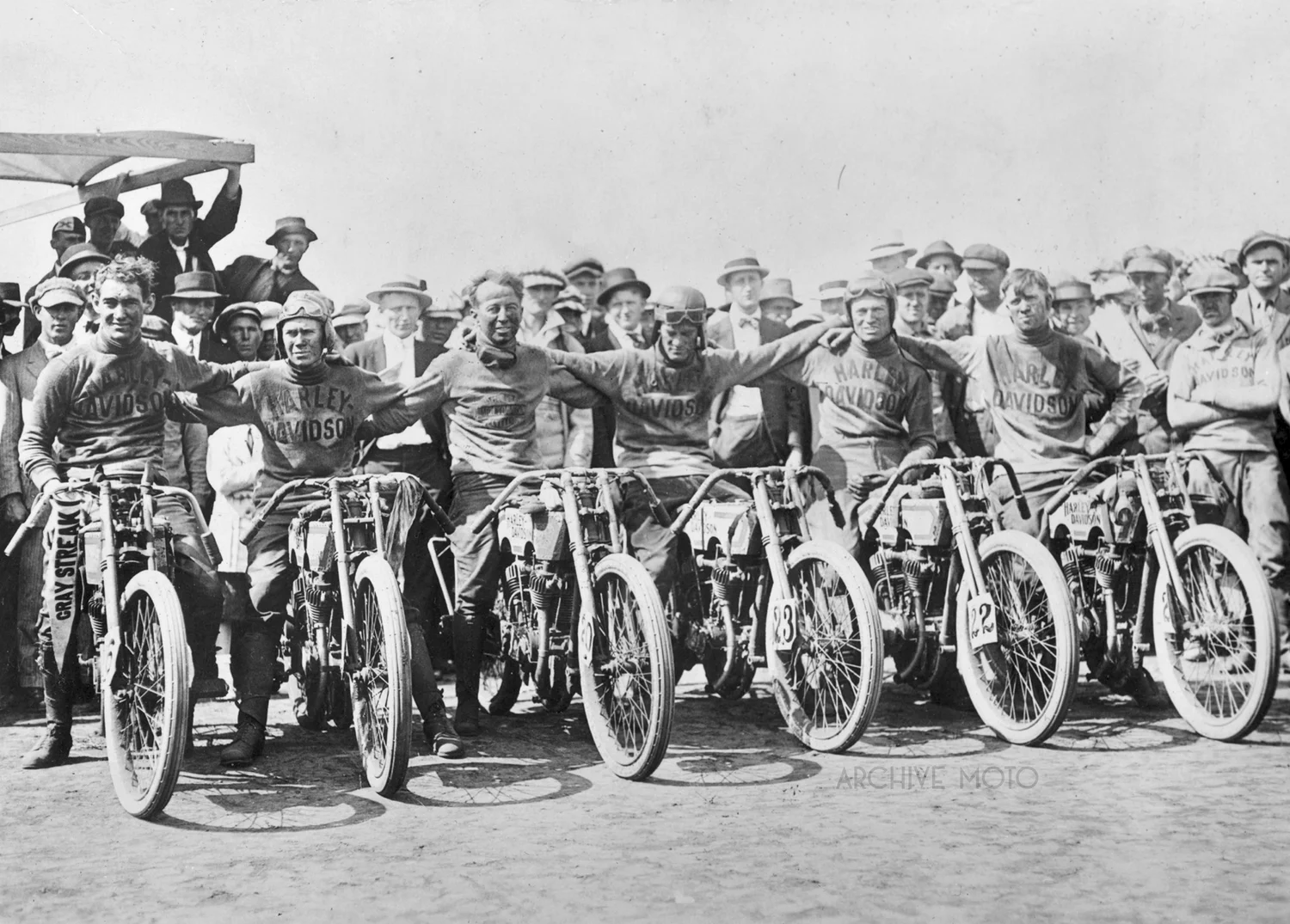After only a year in the professional racing, the triumphant Harley-Davidson factory team poses onboard their magnificent 11KR’s after a landslide victory at the 1915 Dodge City 300, the preeminent motorcycle race at the time. Left to Right are 1st place finisher Otto Walker, 2nd Harry Crandall, 4th Joe Wolters, 5th Leslie “Red” Parkhurst, 6th Alva Stratton, and 7th Ralph Cooper.
The white-hot excitement of the American motordrome simply could not sustain and in September, 1914 the last board of the final circular motordrome was nailed in place in Omaha, Nebraska. Racing however, continued to flourish. The small horse tracks that first gave birth to motorcycle racing continued to harbor those bent on speed and victory, evolving into purpose built dirt flat tracks in the mid-teens. These dusty ovals, typically 1/2 to 1 mile in length began popping up at local and state fairgrounds across the country, becoming a staple of motorcycle and automobile racing well into the modern era. The popular endurance and reliability runs of the first decade alsotransformed into flat out, top speed, no-holds-barred endurance races that spanned hundreds of miles either on public road courses like in Savannah and Birmingham, or on the few large speedways like Atlanta, Indianapolis, and Dodge City. This was a period of large scale transition as the increasingly high level of competition in professional racing contributed to an atrophy of American motorcycle manufacturers, leaving those who faired well on the track like Merkel, Thor, Excelsior, and the mighty Indian, king of the motordrome to enjoy a prominent status in the marketplace. Harley-Davidson had built their empire thus far away from the racetrack, but in this era of intensified competition the Milwaukee based motorcycle company turned an interested eye towards racing. Building a factory racing program would require specialized skills so in 1913 Harley brought onboard Bill Ottatway, a talented engineer and tuner from Thor who quickly began developing a racing platform using Harley’s 1914 Model 10 production twin. Initially designated the 11K series, Ottaway began testing his new racers over the course of the 1914 season with a handful of unofficial competitors. After a mediocre debut at the 1914 Dodge City 300 Ottaway’s machine began to hold its own, capturing a string of regional wins and national victories in Phoenix and Birmingham. Finally, on Thanksgiving Day, 1914, Harley-Davidson fielded their first factory racing team at the Savannah 300 road race and rider Irving Janke placed 3rd. The team expanded for the 1915 racing season, the machines were further refined, and Harley started the season strong with 1st and 2nd place finishes at the Venice 300 on April 4th. By the time of the 1915 Dodge City 300, just one year after the company’s initial tests began, the Harley-Davidson factory team made a clean sweep of 1st through 7th places, the only exception being Excelsior’s Carl Goudy in 3rd. The motordrome era was over, but as the Golden Age of racing matured a new force emerged, one of American motorcycle racings greatest legacies, the Harley-Davidson factory team.






